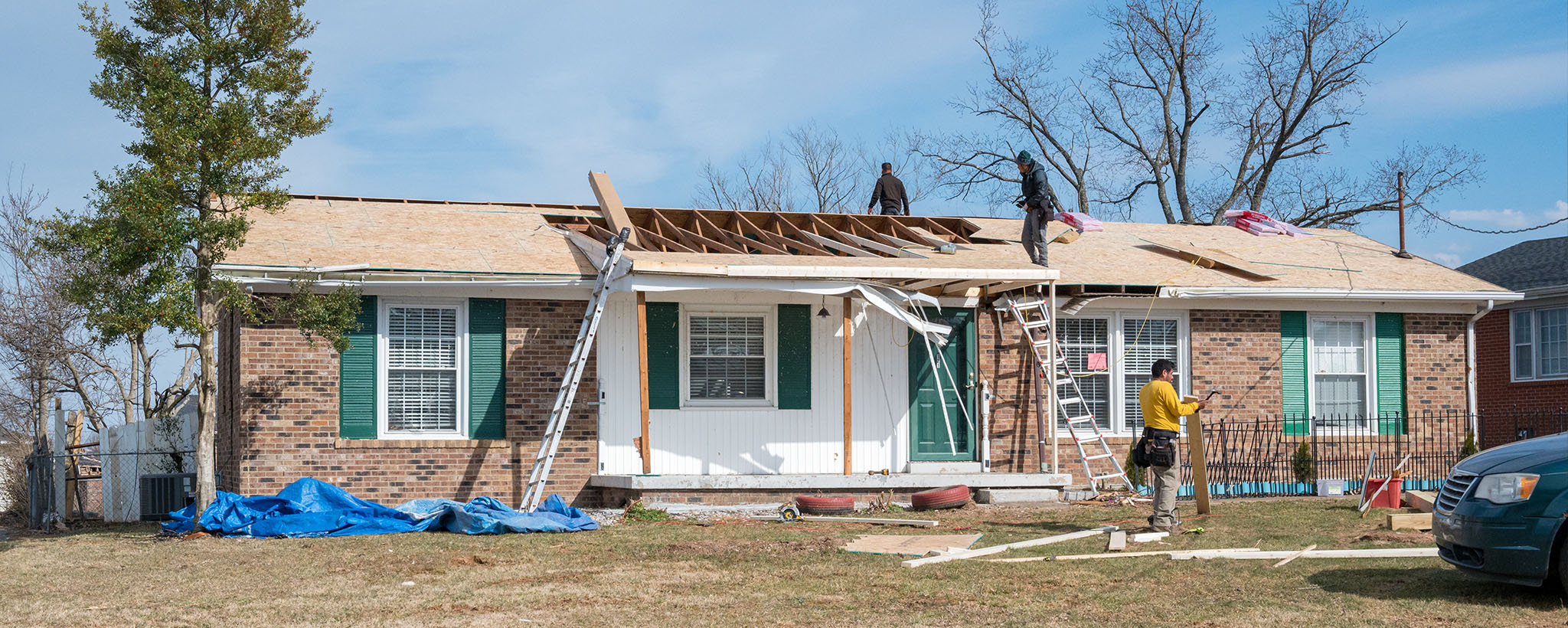
If you are a disaster survivor, please visit FEMA.gov for up-to-date information on current disaster declarations. If you have questions about your disaster assistance application, you can call (800) 621-3362, visit disasterassistance.gov or use the FEMA mobile app.
Recovering from a disaster is usually a gradual process. Safety is a primary issue, as are mental and physical well-being. If assistance is available, knowing how to access it makes the process faster and less stressful. This section offers some general advice on steps to take after disaster strikes in order to begin getting your home, your community and your life back to normal.
First, if you have damages following a disaster, contact your local emergency manager.
- Let your local officials know of any damages you may have, and what immediate assistance you may need.
- Local officials and voluntary organizations are usually the best options for immediate needs such as food and shelter.
If you have insurance, contact your insurance agent to file a claim.
- Make sure to document all your damages – before you clean up, take photos and make a list.
- Save all your receipts for post-damage repair and clean up.
- If you have insurance and damages, you must file a claim with your insurance company.
Replacing Vital Documents
It can feel overwhelming to deal with replacing lost documentation after a disaster. Visit FEMA’s Replacing Vital Documents page for guidance on how to start replacing important documents with resources from state and federal partners.
Recovering from a disaster is a gradual process, take care of yourself and your family
- Your first concern after a disaster is your family's health and safety. You need to consider possible safety issues and monitor family health and well-being.
- If you are returning home following a disaster, know it can be both physically and mentally challenging. Above all, use caution. You may be anxious to see your property, but do not return home before local officials say it is safe to return.
- Administer first aid and seek medical attention for any injured person following a disaster.
- Check for injuries. Do not attempt to move seriously injured persons unless they are in immediate danger of death or further injury. If you must move an unconscious person, first stabilize the neck and back, then call for help immediately.
Safety Issues
- Be aware of new safety issues created by the disaster. Watch for washed out roads, contaminated buildings, contaminated water, gas leaks, broken glass, damaged electrical wiring and slippery floors.
- Walk carefully around the outside and check for loose power lines, gas leaks and structural damage. If you have any doubts about safety, have your residence inspected by a qualified building inspector or structural engineer before entering.
- Watch out for animals, especially poisonous snakes. Use a stick to poke through debris.
- Do not enter your damaged home if:
- You smell gas.
- Floodwaters remain around the building.
- Authorities have not declared it safe to enter.
- Inform local authorities about health and safety issues, including chemical spills, downed power lines, washed out roads, smoldering insulation and dead animals.
- Keep a battery-powered radio with you for emergency updates from local officials.


